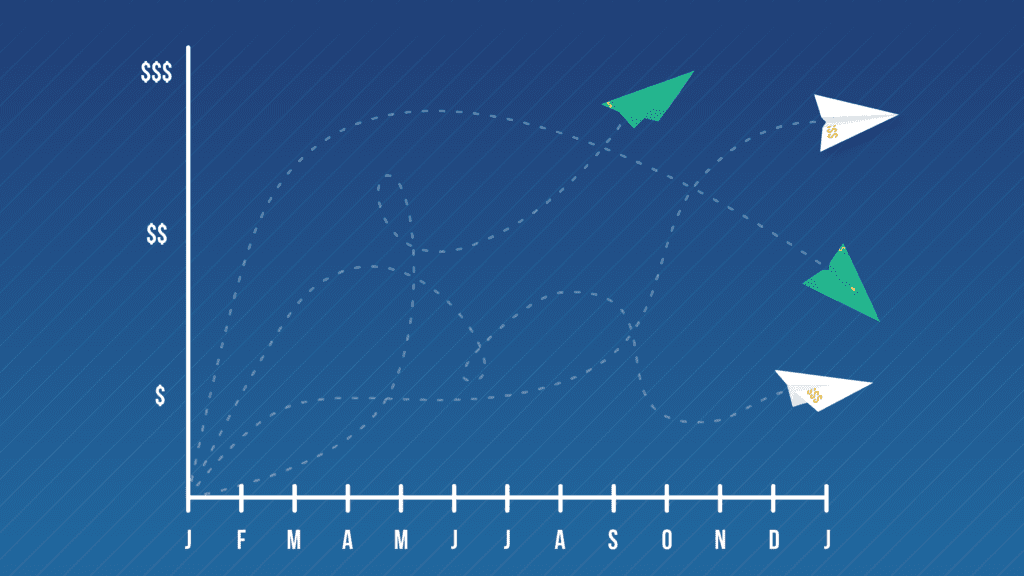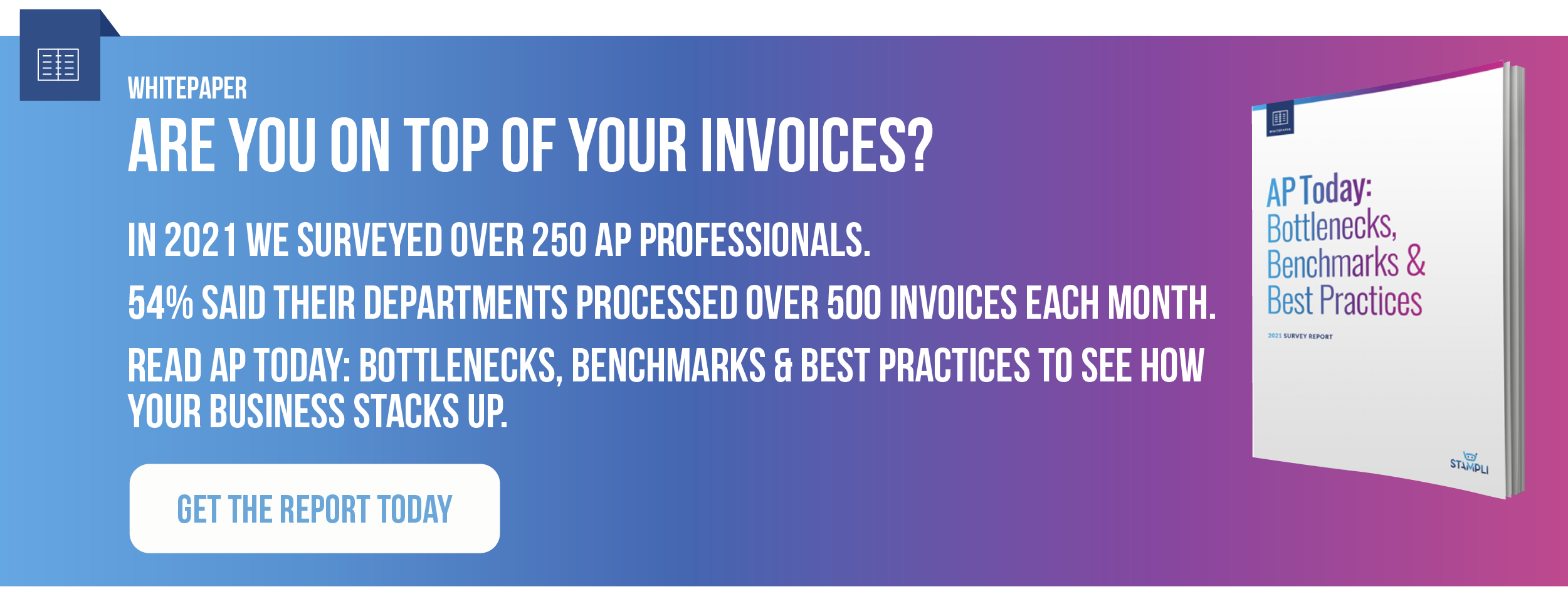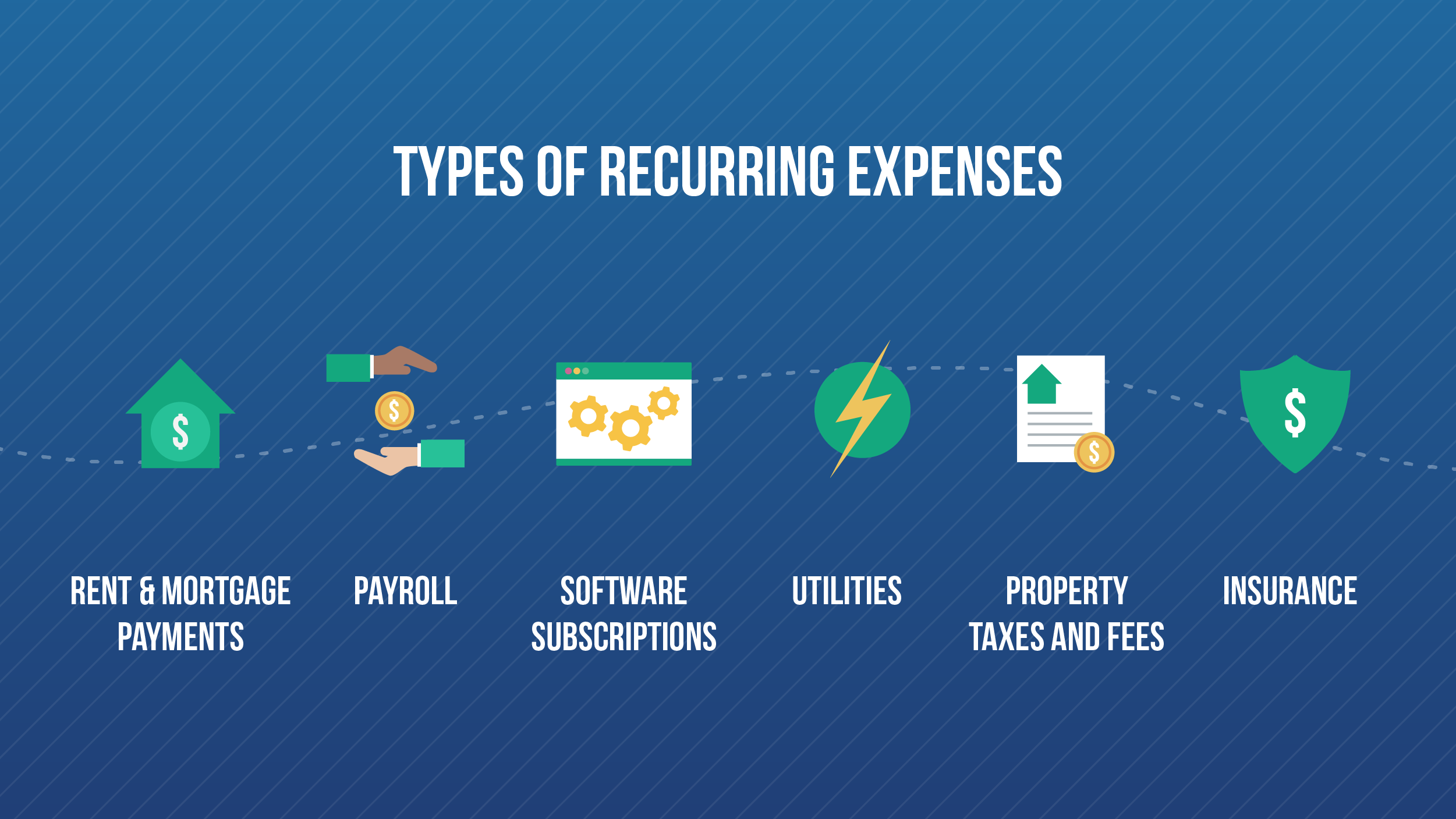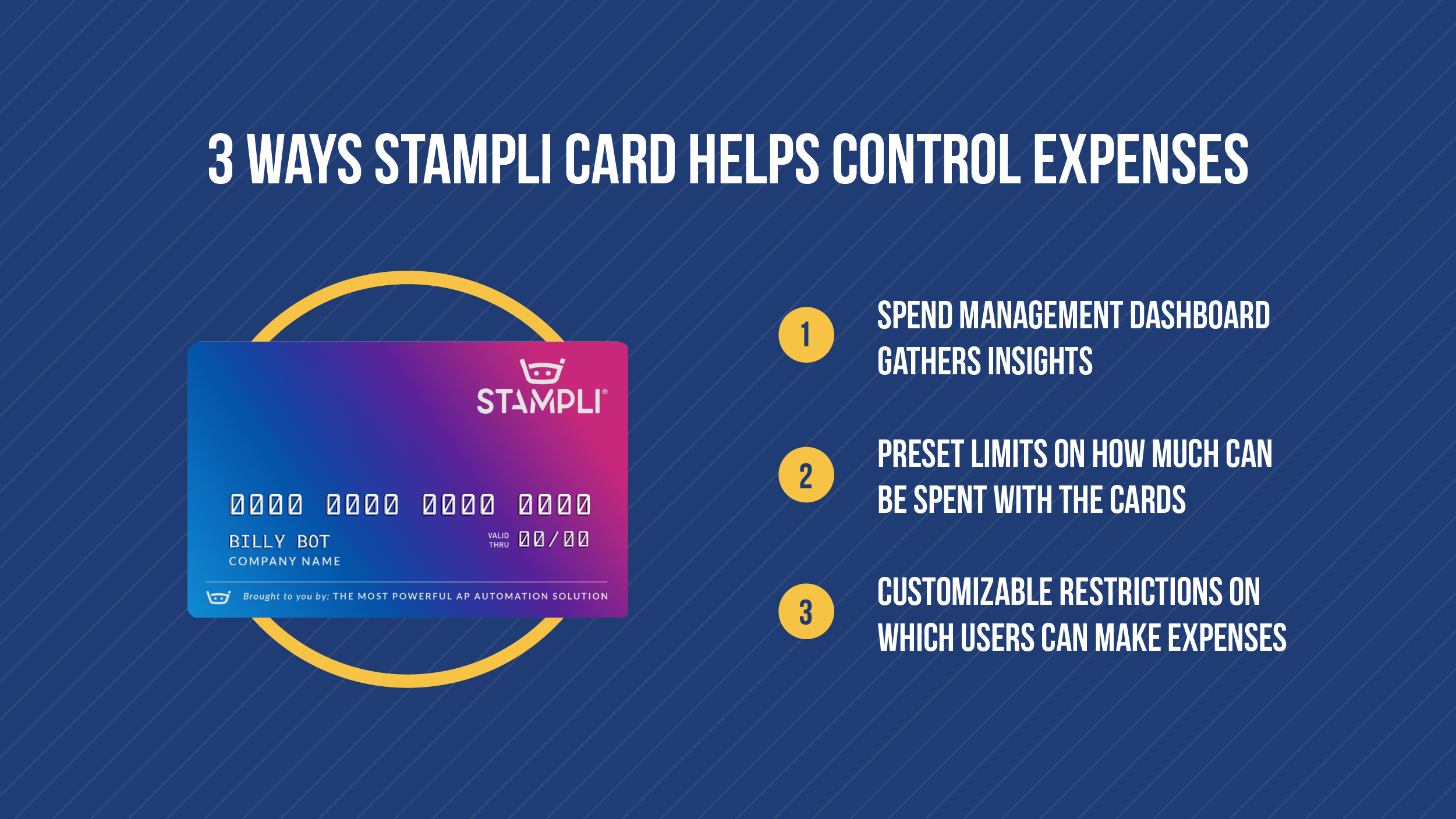The Art of Managing Recurring Expenses

A recurring expense is any cost your business incurs weekly, monthly, or annually. Although the individual amounts of these business expenses may be small, they can add up fast. And as your business grows, so does the number and amount of recurring costs it needs to cover. In addition, the subscription economy continues to grow, and your business can expect to track and manage an increasing number of service subscriptions in the future. According to Gartner, by 2024, more than 45% of IT spending will be on SaaS, IaaS, and other cloud-based solutions.
Businesses face a growing number of invoices for recurring costs and it’s critical to track recurring expenses and pay them on time. If you’re not on top of your recurring expenses, it won’t take them long to grow into a major drain on your financial resources. Faced with this rapid growth, managing business expenses with calendars and Excel spreadsheets won’t cut it.
In this article, we’ll take you through how to measure and report recurring expenses, track and manage them, and use automation to stay on top of them as your business grows.

All About Recurring Expenses
Recurring expenses are the ongoing general and administrative operating expenses your company incurs at regular intervals. Recurring general expenses are direct and indirect costs that aren’t linked to a specific product, service, or business activity. Administrative expenses are costs associated with the management and administration of your business, such as retainers for external accounting services or legal counsel.
Recurring expenses generally have a clear payment pattern and are expected to remain pretty constant throughout the accounting period. They may increase or decrease if needs change, suppliers change their pricing, or your business changes suppliers. For example, if you negotiate a rent decrease with your landlord, your recurring expense for rent will decrease.

Recurring vs. Non-Recurring Expenses
Non-recurring expenses are one-time expenses that may or may not have been expected, such as recovery from natural disasters, legal expenses, or large real estate purchases.
Measuring and Reporting Recurring Expenses in Financial Statements
Businesses usually measure and report recurring expenses as expenditures at the Accounts Payable level. Some companies may also track their recurring expenses and reflect them in their budgets. Tracking and measuring recurring expenses in financial statements can be difficult, if companies don’t explicitly identify and track them in expense reports or procurement activities.
Recurring expenses are usually considered indirect operating costs that don’t relate to cost of goods sold. They’re usually included on the income statement after net revenue and are used to determine the business’s total operating income. Every business has its way of reporting recurring expenses. Some companies combine them into SG&A (Selling, General & Administrative Expenses) or G&A (General & Administrative Expenses), while others include recurring expenses as line items for greater transparency. Recurring expenses are also incorporated into the balance sheet as liabilities (and may be sorted by long and short-term obligations) and into the cash flow statement under operating activities.
Tracking and Managing Recurring Expenses
At the basic level, you need to track the amount, business purpose, due date, and contractual obligation for each expense. Tracking this basic information lets you ensure that the expense is necessary and paid on time, and that you know when it can be renegotiated or canceled. However, tracking and managing recurring expenses can become a challenge for small business owners as their businesses grow and their operations become more complex.
Challenges to Tracking Recurring Expenses
As the number and complexity of your recurring expenses grow, so do your risks. Here are a few things to keep in mind when you’re looking at tracking recurring expenses.
Shadow Spend
Shadow spend occurs when employees bypass corporate expense policies and put expenses on their corporate credit cards. If the employee purchases a subscription or recurring service, this could result in many untracked recurring expenses for your business.
Subscription Creep and Sprawl
Subscriptions can quickly get out of your control, primarily due to shadow spend or unclear expense policies. Employees could subscribe to new services or add additional services to existing subscriptions. Either way, your monthly expenses go up.
SaaS and IT Services
According to a survey by DevSquad, 38% of companies say they are running almost entirely on SaaS and other subscription-based IT services, and 80% of businesses plan to migrate to SaaS entirely by 2024. This trend has two significant potential impacts on your business: it means a lot of your IT costs could switch to recurring expenses, and it will be easy for employees to add or expand your SaaS services. You must get on top of your SaaS costs if you plan to migrate your IT infrastructure.
Duplicate or Erroneous Expenses
Duplicate or erroneous expenses and invoices can result in high recurring costs if you don’t catch them quickly. Regular audits may catch mistakes, but it’s better to have a system to detect duplicates and errors as they happen.
With these challenges in mind, let’s discuss how you can track and manage your recurring expenses.
Six Ways to Track and Manage Recurring Costs
Fortunately, you can track and manage recurring expenses and keep costs in check. Here are six ways that you can take control:
Audit or Review Recurring Expenses on a Regular Basis
Review your bank accounts, corporate cards, and expense reports every accounting period. Look for any new recurring expenses that your business has incurred, any expenses that have changed, what expenses are still needed, and if you can cancel or renegotiate recurring expenses or switch to a new supplier. Regular reviews will also help you stay on top of subscription creep and shadow spend.
Analyze Your Annual Recurring Costs
Keep a total of how much you spend every year or accounting period on recurring expenses like subscriptions. This data will help you reduce operating costs by consolidating your spending, negotiating better terms with suppliers, and developing an accurate budget for future recurring expenses.
Consolidate or Renegotiate Expenses
Once you have an idea of your recurring expenses, you can consolidate expenses into one contract and put it out to RFP or renegotiate existing contracts to get a lower price. It’s also an excellent opportunity to optimize supplier relationship management and make supplier relationships more efficient and effective.
Clarify Expense Policy and Control Spending
Ensure your expense policy clearly states what approvals employees need to purchase subscriptions or enter into recurring service agreements, and the consequences for employees who circumvent the policy. You may also want to investigate expense automation solutions such as payment cards that let you take a higher level of control over employee spending.
Automate Expense Management
Automating your expense and AP processes will let you track and manage expenses in real-time, identify recurring expenses, and reduce errors and delays. Expense automation tools also offer advanced analytics to provide insights into your expenditures. For example, the platform could notify you if an existing expense increases or decreases, or when your company incurs an expense with a new (or disallowed) vendor.
Use Payment Cards
AI-enabled payment card platforms can expand on the capabilities of your expense management platform to give you greater real-time control over employee expenditures. You can set spending limits on individual cards, restrict cards to specific services or products, and set alerts for unusual or unauthorized transactions.
Of these solutions, automation and payment cards have the best potential to help a growing business get on top of recurring expenses. Let’s dig a bit deeper into how automation can help your business.
How Automation Can Help You Control Recurring Expenses
Expense management automation and payment card platforms provide total control over your recurring expenses. Automation can be a cost-effective solution for small and medium businesses looking to keep costs down. Here are some of the core benefits of automating expense management and payments for your business:
Centralized Management of Recurring Costs
Expense management automation lets you centralize expense tracking and management for greater efficiency and control. Some platforms also provide dashboards that visualize expense data with real-time reporting and analytics.
Track and Control Expenses in Real-Time
Automated solutions give you high visibility and control over your expenses, especially if your solution includes a payment card platform. Expense management software can track and report expenses in real-time to provide insights into your spending activity. Payment cards take this further by letting you set card-level restrictions so employees can make only approved purchases.
Detect and Analyze Recurring Expenses
Platforms can automatically detect and report recurring expenses and sort them by spend categories. They can also analyze recurring expenses to detect subscriptions and identify suppliers and payment frequency.
Manage Complex Expenses
Automation platforms equipped with machine learning capability can detect and manage complex recurring expenses such as:
- expenses (such as utility bills) that vary month-to-month,
- expenses split across multiple suppliers (like rent to multiple landlords at a single location),
- depreciation on assets,
- expenses with fixed regular increments;
- and expenses with multiple tax rates.
Scalable and Flexible to Support Growth
Scalable and flexible platforms ensure that your expense management processes grow and adapt when your company does. That way, you have a single, efficient system to manage recurring expenses instead of having separate processes and policies for different locations and departments.
Integration into ERP, Payroll, and Accounting
Platforms that integrate smoothly with your existing business systems give you greater visibility into your company’s financial data and more control of recurring costs across your organization.
Manage Recurring Expenses Anytime and Anywhere
Cloud-based automation platforms let you track and manage your recurring expenses from anywhere in the world, online or on your mobile device.
Learn more about the benefits of AP automation and how you can get started in Stampli’s Guide to Automating AP in 2022.
Stampli Card: Seamless Management of Recurring Expenses

Stampli Card is an AI-powered payment card platform that lets you control and manage your recurring expenses from the top down. Stampli Card enables you to set specific budgets and capture and code recurring payments whenever the cardholder makes a payment. You can set up specialized cards and card accounts with spending limits based on your business budget to ensure you stay on track with costs.
Get control of your recurring expenses today with a free demo of Stampli Card: an innovative, integrated solution that turns AP into a strategic function across your business.